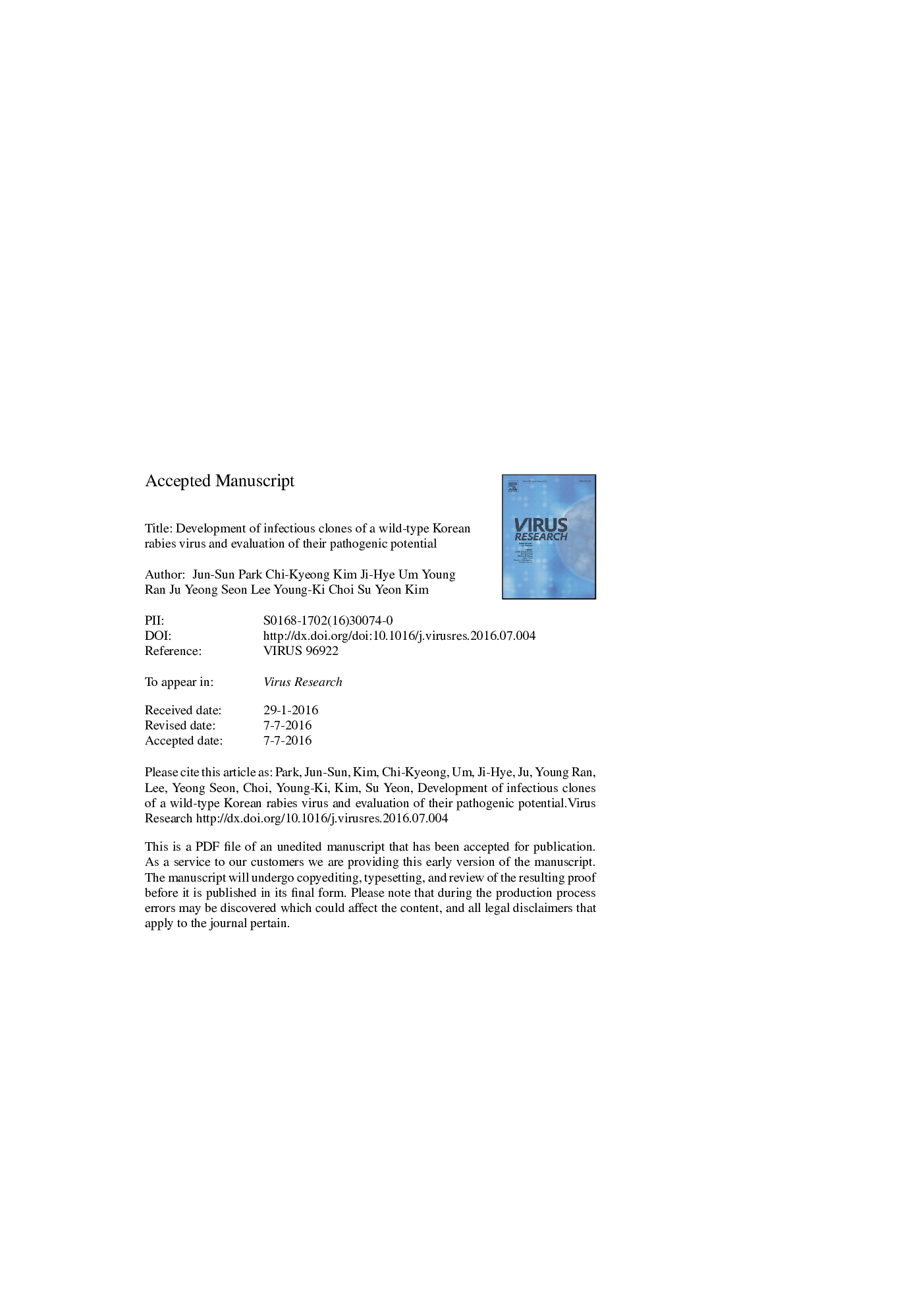| کد مقاله | کد نشریه | سال انتشار | مقاله انگلیسی | نسخه تمام متن |
|---|---|---|---|---|
| 6142018 | 1594334 | 2016 | 34 صفحه PDF | دانلود رایگان |
عنوان انگلیسی مقاله ISI
Development of infectious clones of a wild-type Korean rabies virus and evaluation of their pathogenic potential
ترجمه فارسی عنوان
توسعه کلون های عفونی ویروس هاری کره ای وحشی و ارزیابی توان بالقوه بیماری آنها
دانلود مقاله + سفارش ترجمه
دانلود مقاله ISI انگلیسی
رایگان برای ایرانیان
کلمات کلیدی
موضوعات مرتبط
علوم زیستی و بیوفناوری
ایمنی شناسی و میکروب شناسی
ویروس شناسی
چکیده انگلیسی
Most reverse genetic (RG) systems for rabies viruses (RVs) have been constructed on the genome background of laboratory-adapted strains. In this study, we developed an RG system using a Korean wild type (KGH) strain to investigate the pathogenic potential of different strains. We developed a RG system with the KGH strain for the first time. Following the complete genome sequencing of the KGH strain, pKGH infectious clones were constructed using the CMV/T7 promoter, and HamRz and HdvRz were introduced to allow self-cleavage of the synthesized RNA. We successfully recovered the rescued virus by constructing chimeric RVs in which we replaced a part of the construct with the partial gene from the fixed RC-HL strain. The rescued viruses formed clearer and countable plaques in an immunostaining plaque assay, with a distinct plaque morphology. Furthermore, compared with the chimeric RVs, the pKGH/RCinsÎ4 strain containing the KGH strain G protein exhibited a decreased efficiency of cell-to-cell spreading in BHK-21 cells and significantly reduced (100-1000 fold) replication kinetics. However, pKGH/RCinsÎ4 strain-infected mice revealed 100% morbidity at 11Â days post-infection, whereas other chimeric RV strains showed no mortality. Our RG system is a useful tool for studying differences in the cell-to-cell spreading efficiency and replication with respect to the different internalization patterns of street and fixed laboratory-adapted viruses.
ناشر
Database: Elsevier - ScienceDirect (ساینس دایرکت)
Journal: Virus Research - Volume 223, 2 September 2016, Pages 122-130
Journal: Virus Research - Volume 223, 2 September 2016, Pages 122-130
نویسندگان
Jun-Sun Park, Chi-Kyeong Kim, Ji-Hye Um, Young Ran Ju, Yeong Seon Lee, Young-Ki Choi, Su Yeon Kim,
